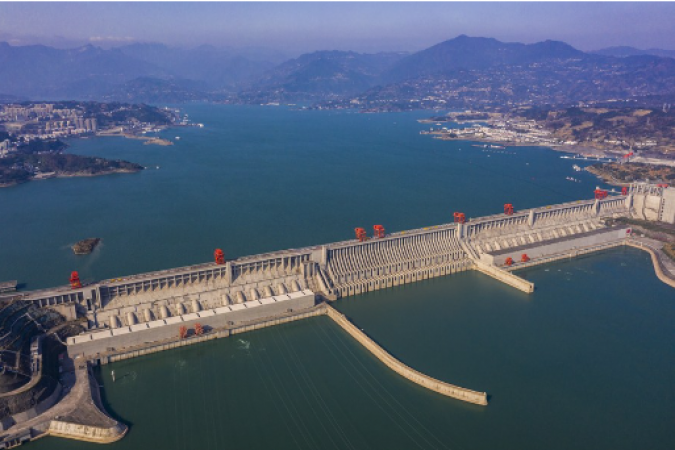
BEIJING: China has launched a new tunnel project to send water from the Three Gorges Dam to Beijing, as part of plans to build massive infrastructure to boost food production and the economy.
The Yinjiangbuhan Tunnel will transport water from the world's largest Three Gorges Dam to the Han River, a major tributary of the Yangtze.
After reaching the Danjiangkou Reservoir on the lower reaches of the Han, the water will travel north to Beijing via the midline of the South-to-North Water Diversion Project, a 1,400 km (870 mi) open canal.
The longest water tunnel in Finland, the Paijane, extends up to 130 meters deep at a depth of 120 kilometers.
The project will take a decade to complete and cost 60 billion yuan (US$8.9 billion), according to the Beijing-based state-owned newspaper Guangming Daily.
"The Yinjiangbuhan Tunnel will establish a physical connection between two important infrastructures in China, the Three Gorges Dam and the South-to-North Water Diversion Project," said Niu Xinqiang, president of the Changjiang Institute of Survey, Planning, Design and Research. Reportedly, during the groundbreaking ceremony on July 7.
According to Zhang Jiangwei, director of the planning department of the Ministry of Water Resources, the Yinjiangbuhan project is "a curtain raiser" for other projects.
Water resources in China are unevenly distributed. The east and south of the country are frequently flooded, while water scarcity severely limits economic development and food production in the west and north of the country. The economic slowdown of the pandemic prompted the government to invest in large-scale infrastructure projects to stimulate growth.
According to Liang Shumin, an economic and development researcher at the Chinese Academy of Agricultural Sciences, the total length of tunnels and canals under construction or planned for water diversion in China could reach up to 20,000 km – roughly the distance between Shanghai and Seattle.
However, whether these projects should be built is still under debate, he said. According to Liang's calculations, the projects will cost taxpayers more than 9 trillion yuan over the next 30 years, which is about 8% of the country's GDP last year.
However, he believes the infrastructure could increase China's annual food production by more than 540 million tons, which is equivalent to the total agricultural output of the United States at the moment.
China currently produces 660 million tonnes more food per year than any other country. However, to meet the rising living standards of its 1.4 billion citizens, the country imports more than 100 million tons of grain every year, raising concerns about food security at home and accusations of hoarding from other countries.
According to Liang, the new water diversion infrastructure could turn about 750,000 square kilometers of barren land – an area larger than Chile – into fields suitable for growing wheat, rice, corn, beans and other crops.
"Given that the rate of growth in food consumption will slow in the future (due to declining population), China could become a net exporter of grains and oilseeds in 2043," Liang said in a paper published last month in Water Resources Planning and Design. was written in , a magazine published by the Ministry of Water Resources of China.
Since it began in 2014, for example, the South-to-North Water Diversion Project has sent 54 billion cubic meters of water from the Yangtze River region to meet the demand of more than 140 million people in northern China – roughly equal to The amount of water in the entire Yellow River.
This resulted in almost immediate changes, some of which were completely unexpected. According to local news reports, in some cities such as Jingtai, groundwater rose so rapidly that it spread to underground car parks and shelters.
According to scientists involved in the project, China is building the world's longest tunnel in Xinjiang with more than 20 tunnel boring machines - the world's largest fleet of its kind - working together.
India's stern warning to China-PAK, said this about CPEC project
China is Planning for lifting ban on China Australia coal Trade
Alibaba wants Hong Kong primary listing to appear in Stock Connect
China sends troops and tanks to Russia